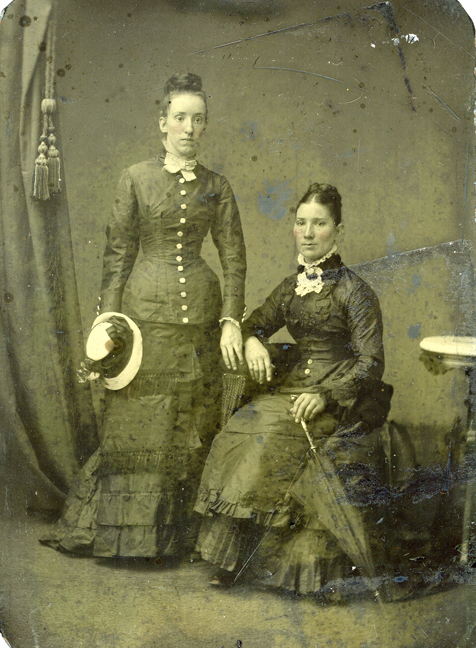Keeley Family Tin Types
|
|
|
|

|
Tintype, also melainotype and ferrotype, is a photographic process first described by Adolphe-Alexandre Martin in France in 1853, and patented in the United States on February 19, 1856 by Hamilton Smith, professor at Kenyon College, in Ohio William Kloen also patented the process in the United Kingdom in the same year. It was first called melainotype, and then ferrotype (by a rival manufacturer of the iron plates used); finally came the name tintype. All three names describe both the process and the resulting photograph.[1]
Tintypes are made by a wet-plate process, in which the photographic emulsion is contained in liquid collodion.
When a photographic image on film or plate is very underexposed, it appears as a positive when viewed against a dark background. This is the basis of the process: a very underexposed image is produced on a collodion photographic emulsion on a dark metal backing; thus viewed the image appears as a positive.
All Photographs Copyright 2009 Christopher Keeley